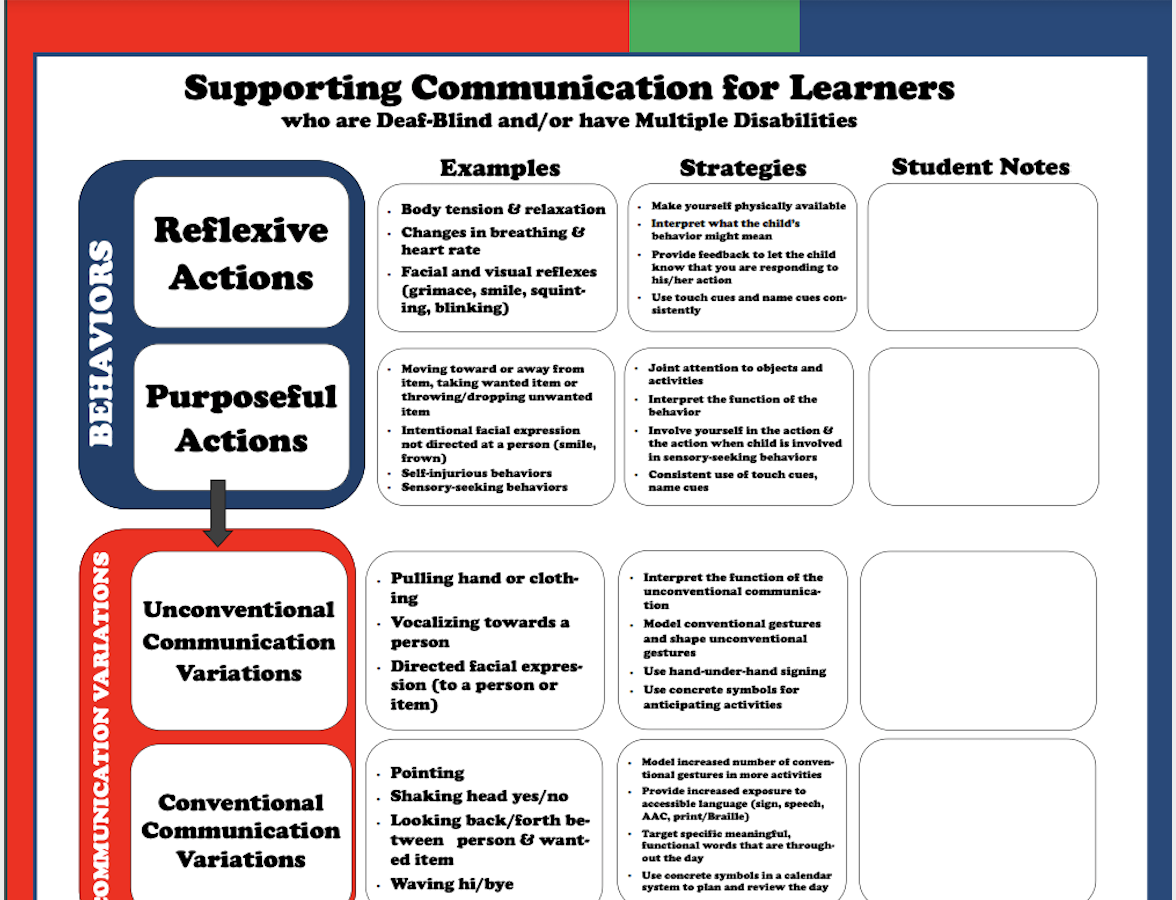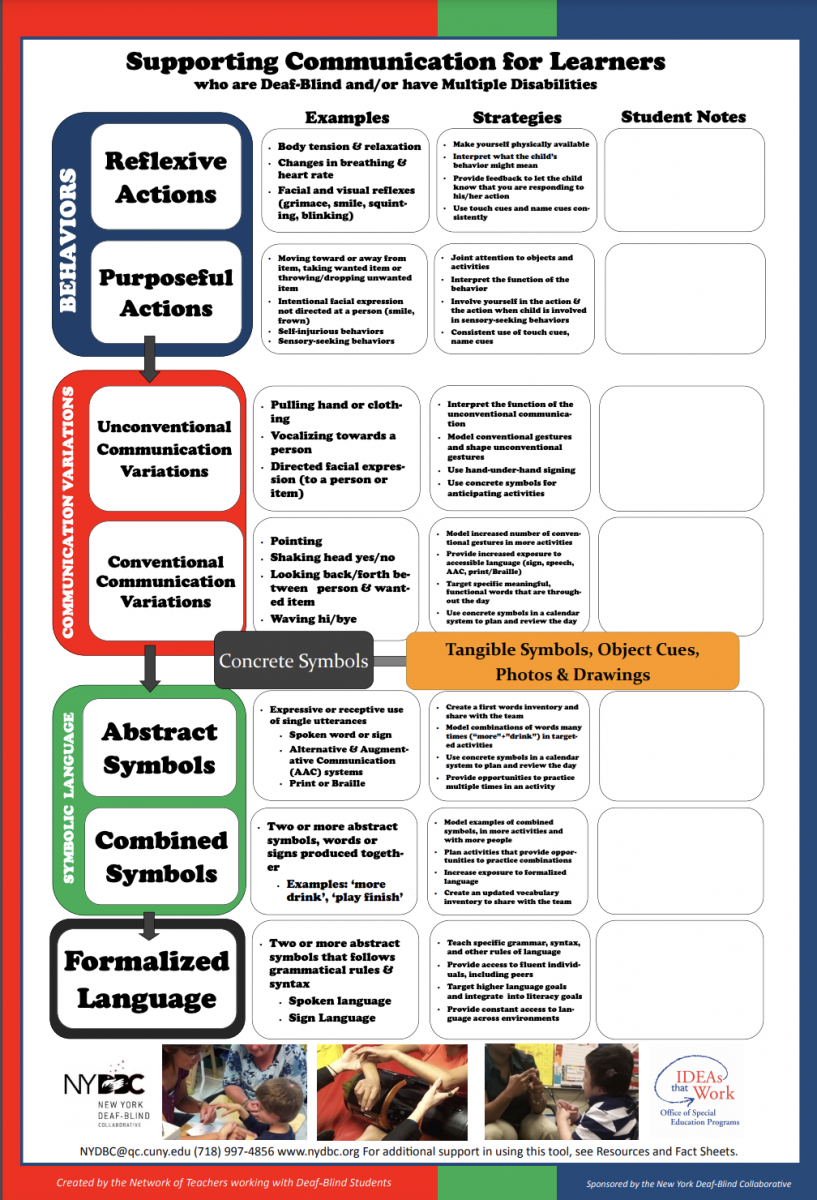Supporting Communication for Learners who are Deaf-Blind and/or have Multiple Disabilities
Submitted by Chris Russell on Feb 16, 2021

This document was created by the New York Deaf-Blind Collaborative to help teams to think about how best to support communication for learners who are deafblind or who have multiple disabilities. There is a space for student notes at the end of each section.
Behaviors
-
Reflexive Actions
-
Examples:
- Body tension & relaxation
- Changes in breathing & heart rate
- Facial and visual reflexes (grimace, smile, squinting, blinking)
-
Strategies
-
Make yourself physically available
-
Interpret what the child’s behavior might mean
-
Provide feedback to let the child know that you are responding to his/her action
-
Use touch cues and name cues consistently
-
-
-
Purposeful Actions
-
Examples:
-
Moving toward or away from item, taking wanted item or throwing/dropping unwanted item
-
Intentional facial expression not directed at a person (smile, frown)
-
Self-injurious behaviors
-
Sensory-seeking behaviors
-
-
Strategies:
-
Joint attention to objects and activities
-
Interpret the function of the behavior
-
Involve yourself in the action & the action when child is involved in sensory-seeking behaviors
-
Consistent use of touch cues, name cue
-
-
Communication Variations
-
Unconventional Communication Variations
-
Examples:
-
Pulling hand or clothing
-
Vocalizing towards a person
-
Directed facial expression (to a person or item)
-
-
Strategies:
-
Interpret the function of the unconventional communication
-
Model conventional gestures and shape unconventional gestures
-
Use hand-under-hand signing
-
Use concrete symbols for anticipating activities
-
-
-
Conventional Communication Variations
-
Examples:
-
Pointing
-
Shaking head yes/no
-
Looking back/forth between person & wanted item
-
Waving hi/bye
-
-
Strategies
-
Model increased number of conventional gestures in more activities
-
Provide increased exposure to accessible language (sign, speech, AAC, print/Braille)
-
Target specific meaningful, functional words that are throughout the day
-
Use concrete symbols in a calendar system to plan and review the day
-
-
Concrete Symbols: Tangible Symbols, Object Cues, Photos & Drawings
Symbolic Language
-
Abstract Symbols
-
Examples
-
Expressive or receptive use of single utterances
-
Spoken word or sign
-
Alternative & Augmentative Communication (AAC) systems
-
Print or Braille
-
-
Strategies
-
Create a first words inventory and share with the team
-
Model combinations of words many times (“more”+”drink”) in targeted activities
-
Use concrete symbols in a calendar system to plan and review the day
-
Provide opportunities to practice multiple times in an activity
-
-
Examples
-
Combined Symbols
-
Examples
-
Two or more abstract symbols, words or signs produced together; Examples: ‘more drink’, ‘play finish’
-
-
Strategies
-
Model examples of combined symbols, in more activities and with more people
-
Plan activities that provide opportunities to practice combinations
-
Increase exposure to formalized language
-
Create an updated vocabulary inventory to share with the team
-
-
Examples
Formalized Language
-
Examples:
- Teach specific grammar, syntax, and other rules of language
- Provide access to fluent individuals, including peers
- Target higher language goals and integrate into literacy goals
- Provide constant access to language across environments
-
Strategies
-
Teach specific grammar, syntax, and other rules of language
-
Provide access to fluent individuals, including peers
-
Target higher language goals and integrate into literacy goals
-
Provide constant access to language across environments
-

